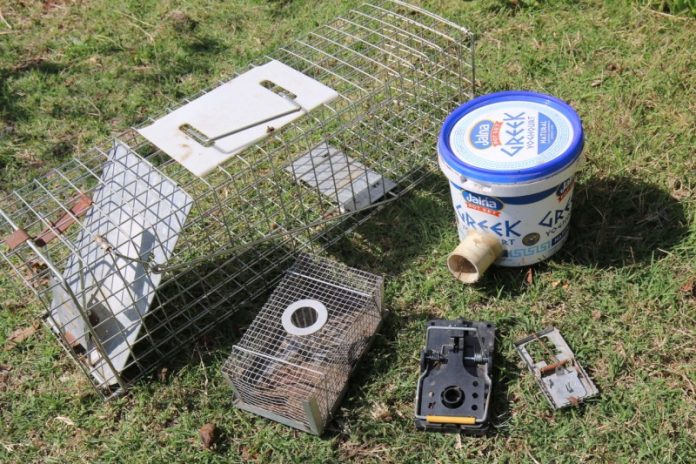
This week’s compost conversation is a follow on from last week’s article looking at the need for ‘secondary’ rodent management approaches to complement our good compost management.
As we said last week, this can be a tricky subject. Everyone will have their own ethical and personal boundaries around taking the life of another creature, so let’s proceed respectfully as we look at some rodent management options.
Biological controls:
Domestic cats and dogs have been used for millennia to keep rodent numbers low. Cats (and many breeds of dog) can have a pretty devastating impact on local mammals, lizards and birds, so we have to weigh up their use as rodent controllers.
A well-fed family pet is also unlikely to be an effective rodent controller. ‘Working animals’ really need to be trained to do this job well, with their feeding and rewards focused on their hunting work.
Managed teams of trained ‘ratting’ dogs used to be deployed around townships. Perhaps this is a sound ecological initiative ready for revival.
Encouraging native wild predators, like owls and phascogales, will help, but is unlikely to be enough on its own.
Live trapping:
There are a range of live rodent traps available that will catch but not kill rodents. Peanut butter seems to be the preferred bait.
Live traps are less likely to accidentally kill a ‘non-target’ species, like a native mouse or marsupial, but they do leave us with the job of dealing with a now captive rodent. Some people just drop their ‘prisoner’ off ‘somewhere else’, but is this just moving our problem from one place to another?
Live trapping requires that we do the dispatching, this will be no big issue for some folk, but out of the question for others. At least we can be sure of what it is we are killing.
Fatal traps:
This category includes the classic ‘snap trap’, as well as modern stun units, that will kill rodents with a bolt. Fatal traps usually do the dirty work for us, but sometimes not completely, leaving us to finish the job.
Fatal traps can’t discriminate between introduced rodents and local fauna, so be careful with placement, putting traps where rats and mice like to go, but native wildlife are unlikely to venture.
Poisons/baits:
When discussing poisons/baits it is important to differentiate between first-generation rodent poisons, which are based on the blood-thinning drug Warfarin, and second-generation offerings that linger in the environment.
Warfarin (which many humans take in small doses for heart conditions) is fatal for a rat or mouse, but, if a poisoned rodent is then eaten by a family pet or wild predator, like an owl, they will likely not receive a fatally high dose, meaning first-generation rodenticides lead to far fewer non-target poisonings. Second-generation rodent poisons remain active in dead rats and mice and are more likely to kill owls, dogs, cats etc. that eat the poisoned rodent.
So, to reduce needlessly killing native and domestic animals, it is best to avoid these second-generation rodenticides altogether. (Wouldn’t it be great if our local shops refused to stock them?) Again, think about placement of baits and don’t overdo applications.
Birdlife Australia WA has some great resources on how best to use baits.
In all cases it is important to know what we are doing, why we are doing it and what the unintended consequences might be.
– Joel Meadows works with *Yes In My Back Yard, (YIMBY), a community-scale composting initiative in Castlemaine and surrounds. Send questions or comments to hello@yimbycompost.com, or to book in for a compost workshop.







